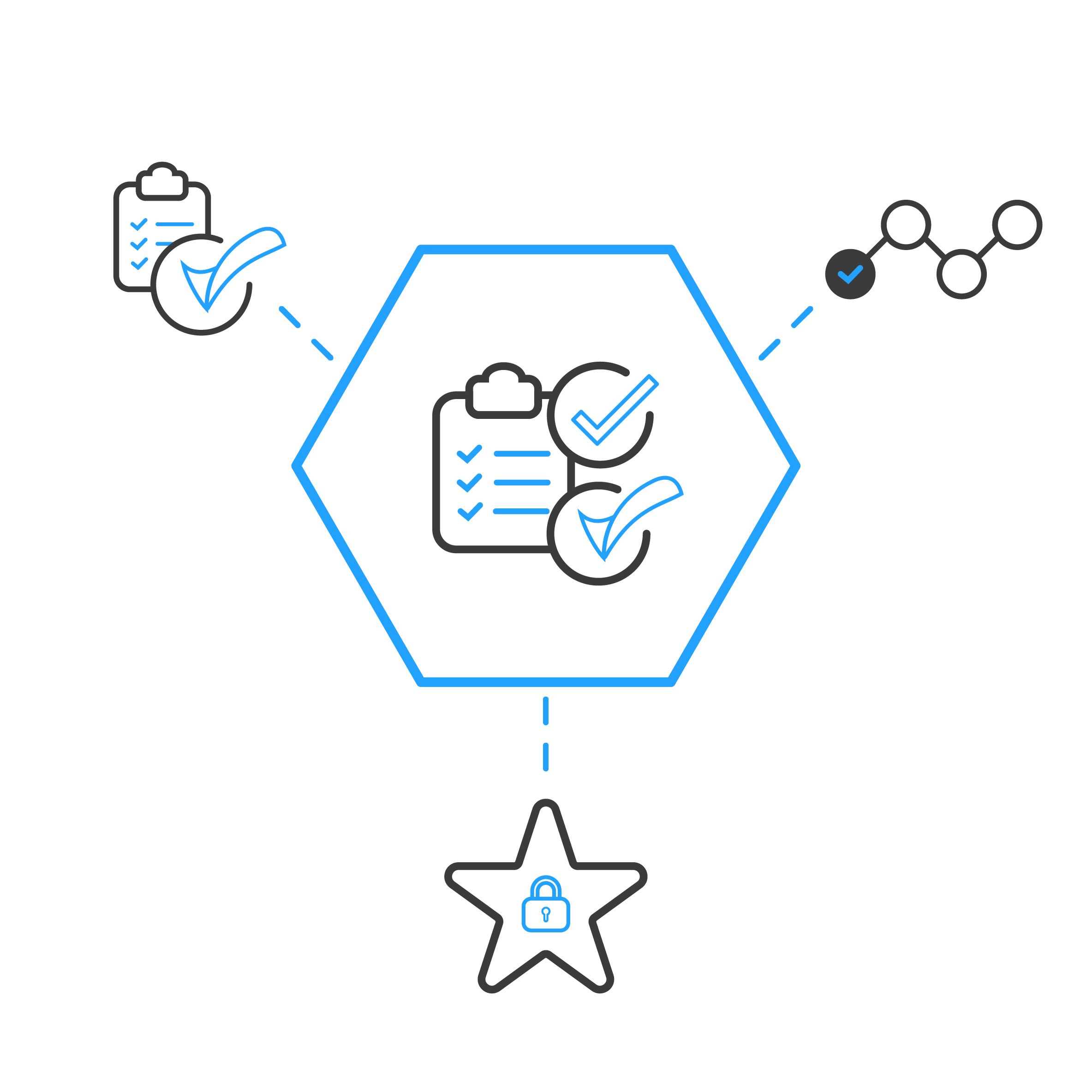
CE, CEP, & IASME
Consultancy Services
Cyber Essentials (CE), Cyber Essentials Plus (CEP), and IASME (Level 1 and 2) certifications provide a structured approach to improving cyber security. They help businesses protect against common cyber threats, comply with regulatory requirements, and build trust with stakeholders. Achieving these certifications demonstrates a commitment to maintaining a secure and resilient organisation.
YOUR CHALLENGES
Increasing Cyber Threats
There are a growing number of cyber threats to safeguard against, such as malware, phishing, ransomware.
Regulatory Compliance
Certain industries, clients, or tender frameworks require a specific certifications or specific standards to be achieved that encompass cyber security.
Customer and Partner Trust
It is necessary to demonstrate robust cyber security measures to earn and maintain the trust of customers and partners.

What is CE and CEP?
Cyber Essentials is a simple but effective, Government backed scheme that will help you to understand how you are able to protect your organisation, whatever its size, against a whole range of the most common cyber-attacks.
Cyber Essentials (CE)
This is the entry-level certification and provides a basic level of cyber security assurance. The certification covers five key areas: secure configuration, boundary firewalls and internet gateways, access control, patch management, and malware protection.
Cyber Essentials Plus (CEP)
Cyber Essentials Plus is an independent technical audit to verify the answers provided within the Cyber Essentials accreditation and ensure the organisation complies to the standard. The process involves auditing against the 5 key controls of Cyber Essentials by;
- conducting vulnerability scans against systems to make sure applicable patches have been conducted within 14 days
- checking the malware protection in place is sufficient and working effectively
- checking for account segregation across permissions
- reviewing MFA controls against cloud applications.
What is IASME?
IASME Cyber Assurance is a UK government-backed certification scheme designed to help small and medium-sized enterprises (SMEs) implement good cyber security practices. The scheme is based on the UK government's Cyber Essentials scheme but includes additional requirements to achieve a higher level of cyber security assurance.
There are two levels of IASME Cyber Assurance certification:
- IASME Cyber Assurance (Level 1)
- IASME Cyber Assurance (Level 2)

Cyber Essentials-as-a-Service (CEaaS)
Cyber Essentials certification shouldn’t be a once-a-year tick-box exercise. PureCyber’s Cyber Essentials-as-a-Service (CEaaS) transforms compliance into continuous assurance, keeping your organisation compliant, protected, and audit-ready all year round.
Delivered by IASME-accredited Cyber Advisors, CEaaS combines monthly vulnerability scanning, configuration reviews, benchmarking, and tailored guidance aligned with the five Cyber Essentials technical areas: firewalls, secure configuration, user access control, malware protection, and patch management.
Instead of scrambling for renewal once a year, you’ll maintain your Cyber Essentials posture dynamically with clear insight into risks, progress, and compliance maturity every month.
Why do you need CEaaS?
+ Continuous Compliance – Maintain your Cyber Essentials posture year-round, avoiding last-minute renewal stress or compliance drift.
+ Reduced Risk Exposure – Monthly scanning and reviews identify weaknesses early, enabling proactive remediation before attackers can exploit them.
+ CE+ Ready, Always – Stay aligned with CE+ technical controls and evidence requirements, simplifying annual certification and assessor engagement.
+ Board-Level Assurance – Regular reports provide clear evidence of control maturity and risk reduction for governance, insurers, and stakeholders.
+ Predictable Compliance Management – A structured, ongoing model that brings clarity, accountability, and consistency to your certification journey.
Cyber Essentials you
From Cyber Essentials certification management and monthly vulnerability scanning to CE+ readiness reviews, benchmark reporting, and dedicated Cyber Advisor support, CEaaS is designed to wrap around your organisation’s needs over and above ticking off CE and CEP every year.
Whether you’re achieving certification for the first time or maintaining mature compliance, PureCyber’s CEaaS gives you visibility, validation, and confidence. Every single month.
Compliance made continuous. Protection made permanent.
Why is CE, CEP, and IASME important?
CE and CEP ensure implementation of basic cyber protocols, enhancing overall security and reducing vulnerabilities.
Certifications like CE, CEP, and IASME Cyber Assurance build trust and confidence, showcasing a commitment to cybersecurity.
CE makes a great starting point on the journey to achieving other security and quality standards.

The Challenge
A web design agency has been working with a particular client for many years. Due to the client’s new procurement strategy, the agency much achieve ISO27001. With nothing currently in place, the web design agency needs a long-term strategy to implement cyber security governance and reach this standard.
Case Study: Enhancing Cyber Security
The Solution
Cyber Essentials is an excellent way to self-assess your current cyber security posture and a great first stepping stone on the path to achieving more effective cyber security processes.
Year 1 Cyber Essentials & Cyber Essentials Plus
Implemented basic security measures.
In-depth security testing by external auditors.
Improved defence against phishing and malware.
Year 2 - IASME Cyber Assurance (Level 1 and 2):
Level 1: Comprehensive risk management and data recovery plans.
Level 2: Advanced cybersecurity measures and regular audits.
Year 3 – Begin working towards ISO27001
The Outcome
+ Improve governance strategy and processes
+ Reduce threats faced
+ Reduced number/level of incidents experienced
+ Retained client and renewed contract
+ Achieved regulatory compliance
+ Reduced vulnerability to cyber threats
+ Enhanced trust with clients and partners

PureCyber’s CE, CEP, & IASME
Expert Guidance
Assistance through every step of certification. Tailored advice for meeting cyber security standards.
Comprehensive Solutions
Full range of services from basic to advanced security. Ensures compliance with CE, CEP, and IASME.
Proven Track Record
Successful case studies across industries. Effective cyber security solutions demonstrated.
Continuous Support
Ongoing monitoring and updates. Quick resolution of security issues.
Enhanced Trust and Compliance
Builds trust with clients and partners. Ensures regulatory compliance.
Cost-Effective Packages
Competitive pricing for comprehensive services aligned with IASME prices for different-sized organisations.
User-Friendly Process
Streamlined certification with clear guidance. Minimal disruption to operations.
Holistic Approach
Integrates cyber security with business strategy. Supports and enhances business objectives.
Contact PureCyber
Reach out to PureCyber for expert assistance with Cyber Essentials (CE), Cyber Essentials Plus (CEP), and IASME Cyber Assurance (Level 1 and 2) certifications.
We work with you to enhance cyber security and ensure compliance. Contact us today to safeguard your business.
CE, CEP, and IASME FAQs
-
Cyber Essentials is a UK government-backed certification scheme that helps organisations protect against common cyber threats.
-
Cyber Essentials Plus includes an additional assessment conducted by an external certifying body to verify that security controls are correctly implemented.
-
It demonstrates a commitment to cybersecurity, enhances trust with clients and partners, and helps comply with regulatory requirements.
-
IASME Governance Level 1 focuses on basic cybersecurity measures, including risk assessment and data protection policies.
-
Level 2 builds on Level 1 with additional requirements such as advanced security measures, incident response plans, and regular security audits.
-
They improve cybersecurity posture, mitigate risks from cyber threats, and are often required for bidding on contracts or partnerships.
-
The timeline varies based on the organisation's existing security measures and readiness. Typically, it can take a few weeks to several months.
-
Yes, Cyber Essentials certifications are valid for one year, and IASME certifications require annual renewal to maintain compliance.
-
While organisations can self-assess for Cyber Essentials, Cyber Essentials Plus and IASME Level 2 require external certification bodies for verification.
-
They demonstrate that your organisation takes cybersecurity seriously, enhancing credibility and fostering trust in your services or products.
-
The main differences between Cyber Essentials and IASME Cyber Assurance are the additional requirements included in the lASME certification, such as governance, risk management, and incident management. IASME Cyber Assurance is designed to provide a higher level of cyber security assurance than Cyber Essentials.
CE, CEP, and IASME (Level 1 and 2) as part of managed cyber security subscriptions
Foundation Subscription
CE, CEP, and IASME (Level 1 and 2) are included in our foundation subscription package.
Core Subscription
Includes CE, CEP, and IASME (Level 1 and 2) as part of our comprehensive cybersecurity services.
Total Subscription
Offers complete cybersecurity coverage with CE, CEP, and IASME (Level 1 and 2) included.
Independent service
CE, CEP, and IASME (Level 1 and 2) can be requested as a standalone service or a one-off project.
-

Practice Makes Perfect
It’s not a question of if, but when…
50% of businesses report having experienced some form of cyber security breach or attack in the last 12 months.
-

Strengthening Supply Chain Security
In our interconnected digital landscape, supply chain cyber-attacks are a significant and growing threat. To learn more click on the button below…
-

What is the DORA Regulation Framework?
Many organisations now rely entirely on digital systems, making sensitive information vulnerable. DORA aims to address this issue by setting a baseline for ICT (Information and Communication Technology) resilience in the financial sector.














